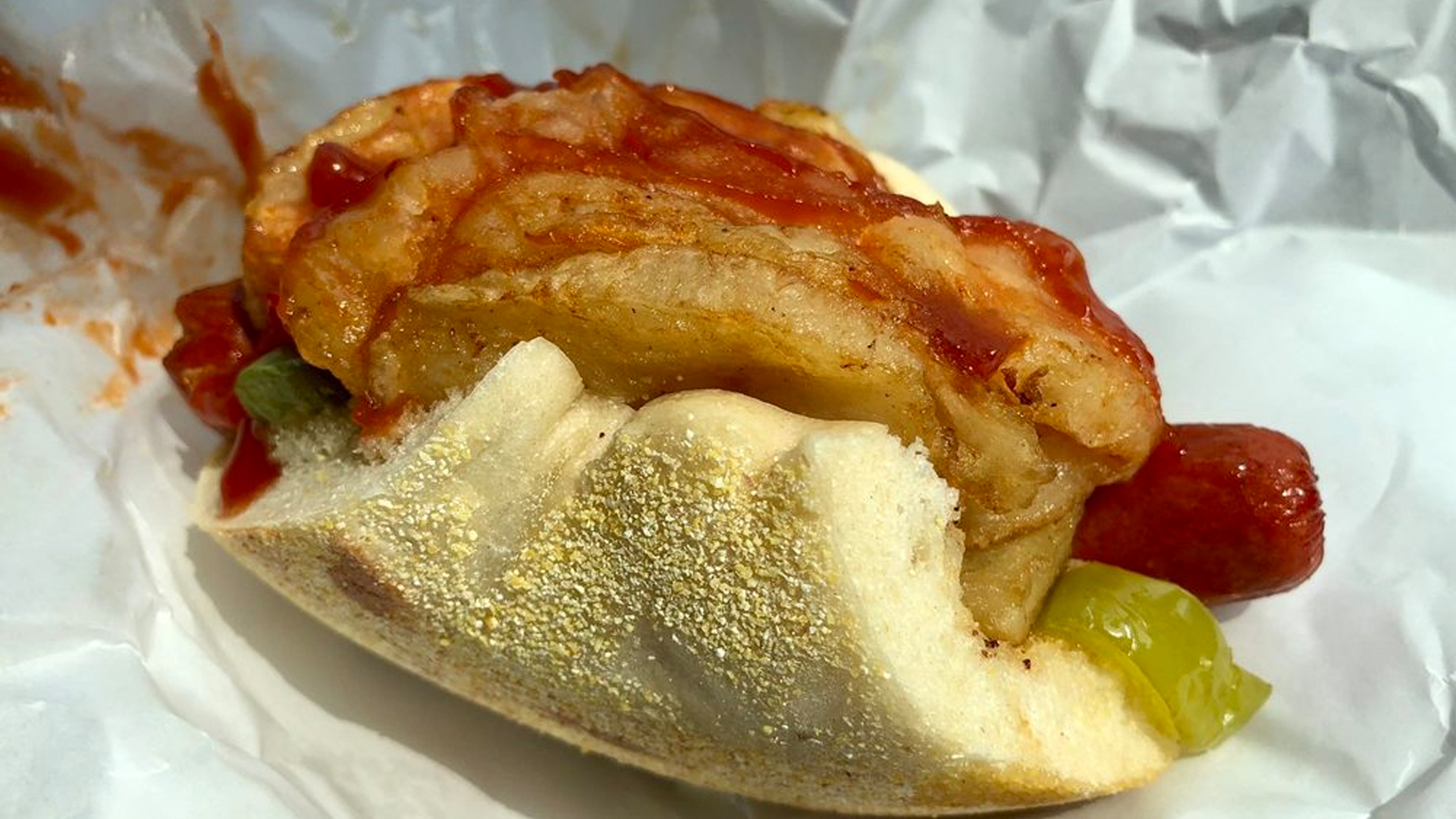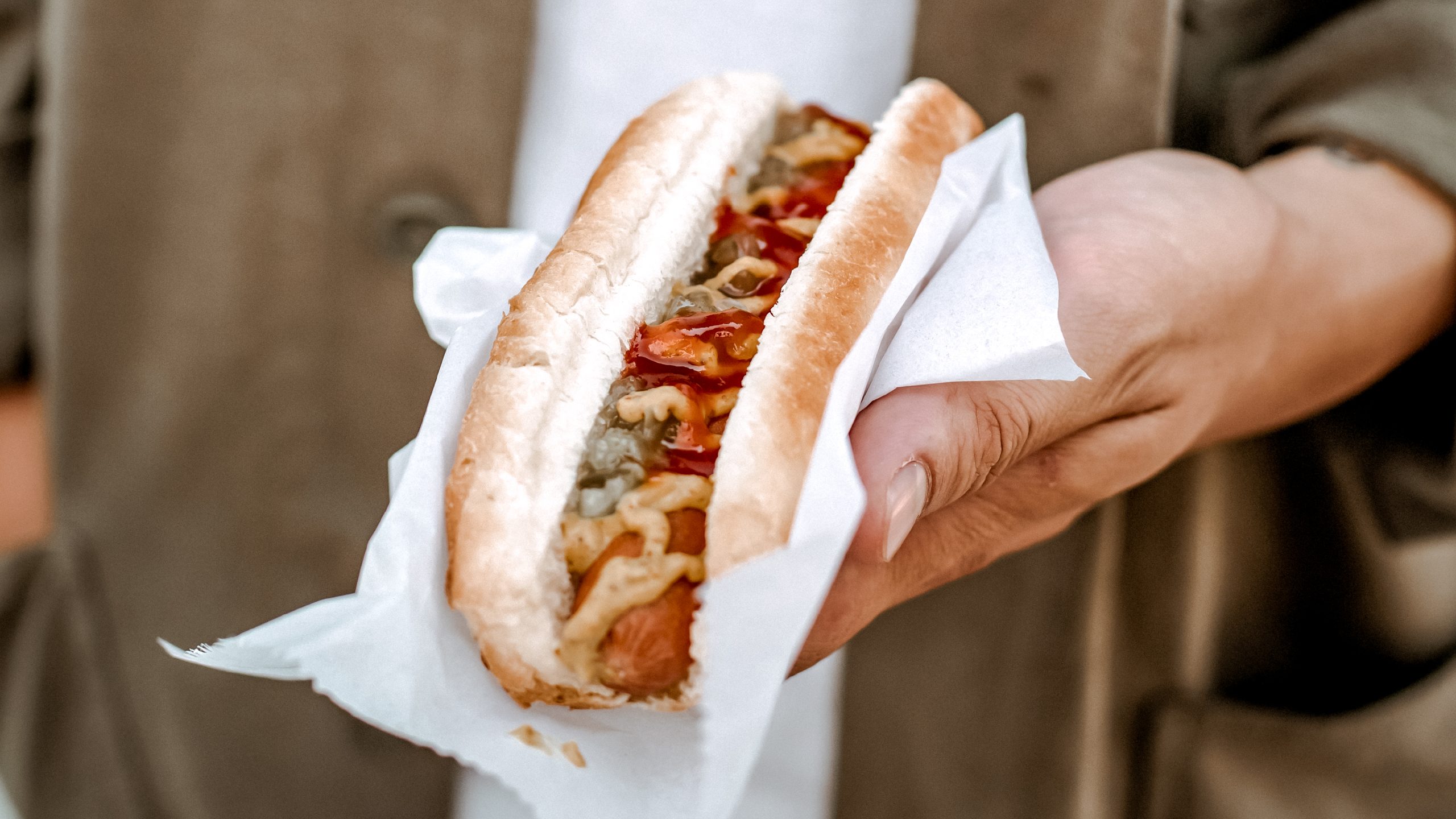Hot dogs are the sort of all-American food that epitomizes the melting-pot cuisine of the nation. Like side dishes at Thanksgiving, every culture and ethnic group brings something to this American dish and Italians are no exception. If you've never heard of an Italian Hot Dog, that's probably because you aren't from New Jersey.
The Hot Dog Melting Pot

The hot dog is different from the Italian sausage tradition, and they are more closely related to sausages found in northern European cuisine -- found in places like Germany, Austria, and Poland. During the 19th century, when immigrant groups from these countries settled in New York, Chicago, and other cities they brought new styles of sausages to the United States. As Bruce Kraig explains in Hot Dog: A Global History, several variations of the modern hot dog emerged at about the same time on Coney Island in New York and at Chicago's World's Fair.
By the 1920s, hot dogs were becoming synonymous with American cuisine. There were two main hot dog styles. In Chicago, pork hot dogs, influenced by Polish immigrants, became dominant. In New York, the city with the highest hot dog consumption for more than a century, beef dogs were preferred because consumers wanted Kosher meat, believing the Rabbi-certified product safer to consume.
Sausages were a common food among Italian immigrants in part because sausages are made from inexpensive meat and include other, less expensive fillings. For many who came from Italy, the sausage was the rare taste of meat.
The tradition of pork sausages fried with peppers and onions and served on Italian bread has long been a feature of Italian festivals. Although there are several older Italian festivals in the United States, one of the largest is New York City's San Gennaro festival. Founded in 1926, sausage and pepper sandwiches were a staple of the fair.
The evolution of the sausage and pepper sandwich into an Italian Hot Dog required a short trip across the Hudson River to Newark, New Jersey, where the Italian Hot Dog was born.
A New Jersey Original

Italian immigrants first settled in Newark, New Jersey around 1870. Throughout the great migration, they continued to settle in the city, and by 1920 almost 30,000 Italian immigrants lived there. That set the stage for Jimmy Buff's restaurant to start serving the Italian Hot Dog.
James and Mary Racioppi opened Jimmy Buff's in 1932 with the name inspired by Jimmy's nickname. He was a known card shark who regularly bluffed his way through games -- "buff" is a slightly mispronounced variation of the name.
The Italian hot dog sandwich started off as a snack served at the Racioppi’s card games offered to friends and card players. The delicious sandwich proved popular enough for Jimmy to establish not just one restaurant, but a small chain.
The original Italian hot dog was served with onions, peppers, fried potatoes, and two hot dogs. The bun was not a hot dog roll but rather a round Italian bread, known locally as “pizza bread.” The soft, squishy breads were cut in half. Each half-moon-shaped roll became one sandwich. Today, "pizza bread" is similar to a pita.
The dish proved popular enough that hot dog shops began selling their own version of the Italian hot dog by the 1950s and 1960s. The trend spread as far as Toms River in South Jersey and throughout northern New Jersey with multiple Jimmy Buff's locations and a few competitors.
Italian Burgers

Another hot dog shop in Newark soon began serving up its own version of the Italian hot Dog. Dickie Dee's, which opened in 1958 in the North Ward, has since become the longest-lasting Italian Hot Dog shop.
Dickie Dee's wanted to create their own signature Italian sandwich, and so expanded on the hot dog concept by inventing the less popular Italian Cheeseburger. The sandwich incorporated peppers and fried potato wedges into a traditional burger. The shop still sells them today, along with Italian subs and pizza.
The End Of An Era

(Phot Credit: Freepik)
Today, there are only two Jimmy Buff's locations remaining, neither of which is at the first location. The original store was rebranded as the Original Italian Hot Dog, but has since closed. Other shops like Joe Joes and Charlie's have closed up permanently in recent years as the shopkeepers have grown older and retired. All this means is that the traditional Italian hot dog is rapidly facing extinction.
Ian MacAllen
Ian MacAllen is America Domani's Senior Correspondent and the author of Red Sauce: How Italian Food Became American. He is a writer, editor, and graphic designer living in Brooklyn. Connect with him at IanMacAllen.com or on Twitter @IanMacAllen.

